Endoscopic retrograde cholangiopancreatography in patients with altered anatomy: How to deal with the challenges?
- PMID: 25132917
- PMCID: PMC4133413
- DOI: 10.4253/wjge.v6.i8.345
Endoscopic retrograde cholangiopancreatography in patients with altered anatomy: How to deal with the challenges?
Abstract
Endoscopic retrograde cholangiopancreatography (ERCP) in patients with surgically altered anatomy is challenging. Several operative interventions of both the gastrointestinal tract and the biliary and/or pancreatic system lead to altered anatomy, rendering ERCP more difficult or even impossible with a conventional side-viewing duodenoscope. Adapted endoscopes are available to reach the biliopancreatic system and to perform ERCP in patients with altered anatomy. However, both technical difficulties and complications determine the procedure's success. Different technical approaches have been described and are highly dependent on local expertise and endoscopic equipment. Standardized practical guidelines are currently unavailable. This review focuses on the challenges encountered during ERCP in patients with altered anatomy and how to deal with them. The first challenge is reaching the papilla or the bilioenteric/pancreatoenteric anastomosis in the patient with postoperative altered anatomy. The second challenge is the cannulation of the biliopancreatic system and performing all conventional ERCP interventions and the third challenge is the control of possible complications. The available literature data on this topic is reviewed and illustrated with clinical cases.
Keywords: Altered anatomy; Billroth; Endoscopic retrograde cholangiopancreatography; Roux-en-Y.
Figures
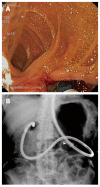
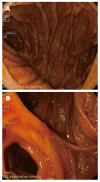
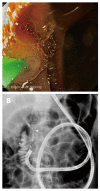
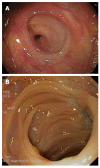

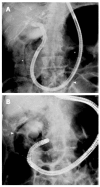
References
-
- Cotton PB. ERCP overview. A 30-year perspective. In: Advanced digestive endoscopy: ERCP., editor. Cotton P, Leung J, editors. Massachusetts: Blackwell Publishing Ltd; 2005. pp. 1–8.
-
- Dumonceau JM, Andriulli A, Deviere J, Mariani A, Rigaux J, Baron TH, Testoni PA. European Society of Gastrointestinal Endoscopy (ESGE) Guideline: prophylaxis of post-ERCP pancreatitis. Endoscopy. 2010;42:503–515. - PubMed
-
- Adler DG, Baron TH, Davila RE, Egan J, Hirota WK, Leighton JA, Qureshi W, Rajan E, Zuckerman MJ, Fanelli R, et al. ASGE guideline: the role of ERCP in diseases of the biliary tract and the pancreas. Gastrointest Endosc. 2005;62:1–8. - PubMed
-
- Moreels TG. ERCP in the patient with surgically altered anatomy. Curr Gastroenterol Rep. 2013;15:343. - PubMed
-
- Lee A, Shah JN. Endoscopic approach to the bile duct in the patient with surgically altered anatomy. Gastrointest Endosc Clin N Am. 2013;23:483–504. - PubMed
Publication types
LinkOut - more resources
Full Text Sources
Other Literature Sources
Research Materials

